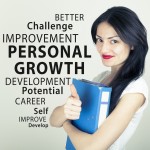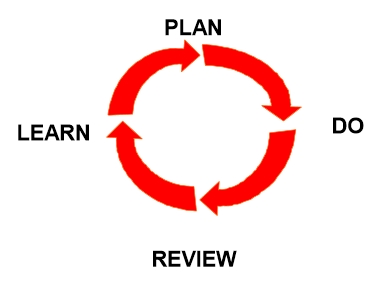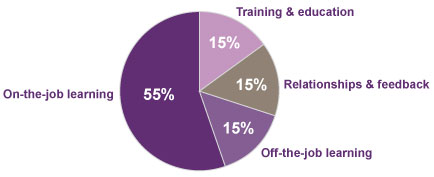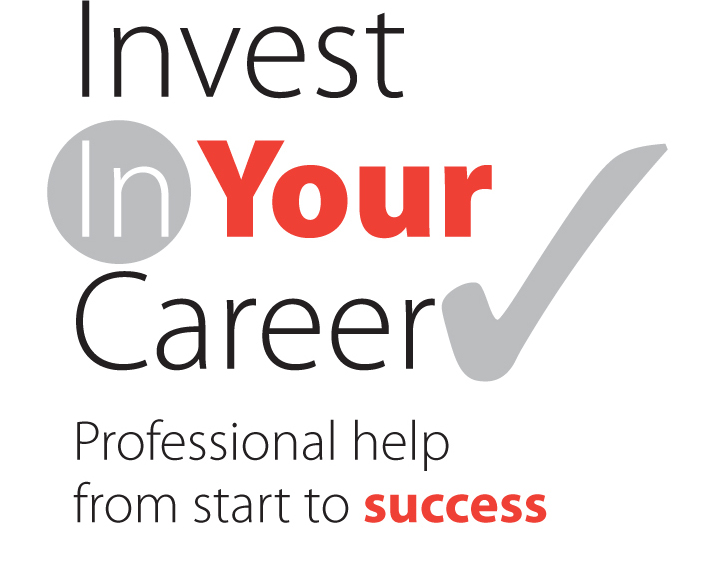Personal Development Guide

WHAT IS IT?
This free Personal Development Guide is designed to help you understand the learning process, in order to build your capability and improve performance.
Specifically this guide will: –
- Encourage you to take accountability for your own personal development – ‘empowered learning’
- Explain the learning process and the connection to your future success
- Explain what learning options are available
- Explain how to select the most suitable options for you
WHY USE A PERSONAL DEVELOPMENT GUIDE?
With a busy schedule you may sometimes find yourself short of time. This Guide will enable you be even more successful by helping you to gain more value from your learning in the time you do have available.
HOW TO USE IT
This guide has been designed to make the best use of your time, with information presented in a concise format including summary hints and tips.
In addition, you’re encouraged to benefit from other resources you may have at your disposal.
1. You’re in Control
Each individual should consider themselves accountable for their own personal development. In practice, this is normally in partnership with the individual’s manager and others, but ultimately each one of us is empowered: each one of us is in control of our own individual development.
Empowerment is a two-way street.
While you can be “empowered” to do a job, if you don’t accept the responsibility and become accountable, you cannot be truly empowered.
Self-awareness is the foundation for all individual, personal development and also helps you identify the barriers to empowerment (e.g. micro-management, control) and opens up the opportunity for growth.
Self-awareness is about managing our own scarce, personal resources to optimise productivity, effectiveness and performance. It requires personal initiative and asks that we invest in ourselves to gain the insights which will help us develop to our best and also, in turn, effectively support the development of others.
Defining ‘self’

These five descriptions are our “internal guides” and influence the choices we make, the way we behave and what the world sees on the “outside.” Understanding each of these elements can help you to navigate your way around assessing your development needs and building your self-awareness capability.
Start by considering the following five descriptions of yourself:
- Explore who you are and how you operate to develop insight into your style.
- Review your abilities, strengths and talents to assess what you do best.
- Dig into your passion and drive to understand what motivates you.
- Think how you relate to others and try and determine your emotional intelligence
- Delve into your health, wellbeing and sustainability to see how your good health fuels productivity.
2. Learning to be successful
Learning is a relatively permanent change in behaviour that occurs as a result of practice or experience. This will involve acquiring or developing knowledge, skills and behaviours and converting these into actions and beliefs. It can take a variety of forms, planned or unplanned, through the job or off the job, and can be provided by your employer or self-directed by the individual.
However, you will be a more successful leader if you understand the significance of two key principles:-
- Where learning takes place
- How learning takes place
2.1 Where learning takes place
As humans, we learn all the time and the range of learning opportunities can be represented as falling into the following areas:-

Think about this model and ask yourself: where does most of your learning occur?
You can be more successful by understanding that learning from everyday experiences can be substantially increased if it’s a more conscious and deliberate process, rather than accidental and ad hoc.
Continuous learning is an approach that emphasises the value of learning as an everyday experience. It can only work when the individual has an ongoing commitment to their own personal development, and a desire for continuous improvement in their own and their employer’s performance.
So for each leader, ownership and control of their learning can lead to greater opportunities, increased confidence, improved performance and greater success. But leaders also need to understand how learning from experiences takes place in order to maximise the impact.
2.2 How learning takes place
A helpful way of understanding how learning takes place from experience can be illustrated as follows: –

This illustration shows the Continuous Learning Cycle – there isn’t a beginning, middle or end, and depending on the learning situation, individuals can enter the cycle at any stage.
The key point is that the most effective learning occurs if you work through all these stages; by applying this learning to situations in the future, your results will normally be more successful
Explanation of the process:-
- Do the actual experience. This may be re-active – letting the experience happen to you.
OR
- Pro-active – deliberately seeking out the experience.
- If you’re to learn from the experience, it’s vital to review what has happened – which means looking back without being judgmental. This can be achieved quite quickly without seriously disrupting the work activity.
- Reviewing has little value unless you draw conclusions. This should involve scanning the notes you have made or collating your thoughts from the review stage, to identify the lessons learnt.
- Conclusions and ideas need to be planned and tested in reality so that learning can be related and applied to similar situations in the future.
2.3 Applying your learning for more success
You can be more successful by applying the approach explained above and you may be surprised how quick, easy and effective it can be.
- Think of some of the unique experiences you have had today or in the last week, where the results were particularly positive or negative.
- These may have been important business meetings, reports you produced, telephone calls, a piece of home DIY, or preparation of a dinner for guests:
- When you apply this process you may be surprised by the degree of impact on your results.
- Review what conclusions you drew from each of these experiences
- From these conclusions what did you learn?
- OK, so now plan what you will you do next time you’re in that same or similar situation (apply your learning), in order to achieve an even more successful result.
- You can apply this process to any business, domestic or personal situation to be more successful.
Example – driving a car
- You’re driving along a 3 lane road in the inside lane and decide (plan) to overtake a car in front
- You signal your intention, check inside mirror and door mirror and start to pull-out (do)
- Just at that moment another car overtakes you and you swerve back to your original course
- Your heart rate may rise as it was a close call, but you realise (review) the other car was hidden in a blind spot in between the views you had from your two mirrors
- You conclude, (conclude / learn) that there is a ‘blind spot’ between your car’s two mirrors
- So next time you overtake (plan), you will turn your head slightly to one side and check-out your blind spot before you actually change course
- So by learning from this incident you will automatically become a more successful and safer driver when making overtaking manoeuvres – as long as you consistently apply this learning every time you undertake such a manoeuvre
- The payback to yourself (and possibly your employer), apart from avoidance of possible injuries or even death, is that you’re likely to have a reduced number of accidents and as a result, avoidance of higher car insurance costs
3. Learning & Development Opportunities
There are a wide range of opportunities to learn and develop yourself on a personal level. Normally individual development can be considered as being grouped together through four types of experiences:-
- On-the job learning
- Training and education
- Relationships and feedback
- Off-the-job learning

Examples of these learning experiences are given below and more details on how to gain value from each of these are provided in the Free Guides section of the Invest In Your Career web site.
- On-the-Job Learning (55% of development)“On-the-job” development occurs when significant challenge and ‘stretch’ exists within the job itself. Development at work is about re-shaping your current job, or taking on new job responsibilities with heightened or very different opportunities.On-the-job learning experiences include:
- Special projects
- Project teams
- Rotations / lateral moves / promotions
- Secondments (international / local)
- Work-streams
- ‘Acting’ positions
- Training and Education (15% of development)Learning experiences include:
- Internal and external courses (on-line and classroom)
- Simulations
- Workshops, conferences, annual meetings
- Degree and certificate programmes
- Membership of Professional Bodies / Associations
- Benchmarking visits
- Reading – Books, articles, etc.
- Case studies / simulations
- Internet websites
- Presentations
- Facilitation / teaching
- Relationships and Feedback (15% of development)Learning experiences include:
- Coaching / Co-coaching
- Mentoring
- Team development events
- Job Shadowing an expert
- Networking
- Pairing / partnering
- Buddy system (informal)
- Feedback tools e.g. (360 – feedback from customers, or peers, supervisors, colleagues)
- Development / Assessment Centres
- Feedback discussions (with manager, peers, subordinates, mentor, coach)
- Off-the-Job learning (15% of development)Learning experiences include:
- Professional or special interest organisations (board membership, educational meetings / workshops)
- Community service (voluntary work, committee participation, mentoring)
- Family events (re-unions, life-cycle events)
4. Selecting the Right Option(s)
People learn in different ways and different development needs lend themselves to different solutions. In fact, development tends to be most successful when more than one option is blended together to address a specific need.
It is therefore very helpful if an individual selects the most suitable development option(s) for themselves and the following steps are designed to help this decision process:-
- STEP 1 – Identify Your Learning Need Focus on your learning need and be as specific as possible. Do you need to improve your knowledge, skill or behaviour?
- STEP 2 – Select Development Option(s)Using the list of examples below as a general guide, decide which option, or blend of options, is likely to be the most suitable for you.This list is not meant to be comprehensive, but it certainly provides some concise examples:
Learning Need
(to improve ‘x’)Possible Development Options
(to develop ‘x’)KNOWLEDGE- Job Assignment / Project
- Secondment
- Lecture
- Conference
- Benchmarking
- Reading
- E-learning
SKILL- Job assignment / Project
- Secondment
- E-learning
- Role Play or simulation in workshop
- Work shadowing
- Coaching
BEHAVIOUR- Job assignment / Project
- Secondment
- E-learning
- Role Play or simulation in workshop
- Work shadowing
- Coaching
- 360 feedback
- STEP 3 – Be Practical Ensure you consider the key practical aspects of your preferred options, i.e. consider your preferred learning style, availability of the option selected and any potential costs that may be incurred. You may also need to consider some adjustments to your initial selection in order to satisfy these considerations.
- STEP 4 – Maximise the Payback Consider the benefits of taking a blended approach whereby you obtain payback from, say, undertaking a specific project coupled with coaching from your manager. If you wanted to supplement this with additional feedback, you could also consider adding feedback from a colleague or selection of individuals whose opinion you respect and value, plus sharing your learning with a buddy.Each of these options will provide value: the feedback received may overlap and they may take a little more effort to organise, but there’s normally significant value in blending at least two options together.
- STEP 5 – Record in your PDP Make sure you keep a record of the development options you have finally selected in your Personal Development Plan (PDP) and share your development plan with your manager and, if you have one, your learning buddy. This final stage is most important and your manager and buddy will take value themselves in helping you implement your plans.
TOP TIPS FOR PERSONAL DEVELOPMENT
- Take accountability for your own personal development – most employers encourage individuals to empower themselves.
- Practice continuous learning by taking time to reflect and learn from significant experiences in your business, personal and domestic life.
- Be more successful by applying your learning to new situations and learn again from these experiences.
- Select your development options with care and try to take a blended approach whenever practical.
- Whether you are developing knowledge, skills or behaviours, experience and practice are the best ‘teachers’.
- Use your PDP to record your development plans.
- Share your plans and experiences with a buddy who is motivated to assist with your development.
We hope this guide will assist your personal development and help you to build your capability and performance
YOUR NEXT STEP
1.
Related Free Guides. You may find some of our other Free Guides can aid your Personal or Career Development. Click on any of the Titles in the table below to link to the Free Guide of your choice or click HERE to return to the free guides web page
Experience Individuals
Undergraduates & Graduates
2.
Get a PDF Download. See the link at top of this page to receive a PDF of this Guide and we will also send you a Free Tool designed to improve Time Management Skills.
3.
Make a suggestion. For any additions to our series of Free Guides please send your suggestion to enquiry@iiyc.biz.
4.
Written by Stephen A Isherwood



